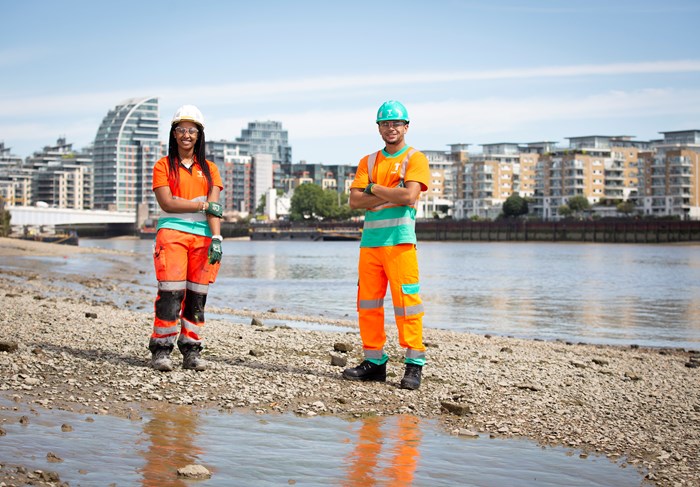Swimming in a sewer: half of Londoners think it's safe to swim in the Thames


Tideway, the company on a mission to make the Thames cleaner by building a 25km ‘Super Sewer’, joins former engineer and reality star, Wes Nelson, to warn the public of the dangers of swimming in the river after new research shows over half believe it's safe.
Over a quarter of Londoners (27%) have gone swimming in the River Thames with an additional 9% having swum in either Surrey Quays or Regents Canal, which feed off the main river.*
The new research of 1,000 London residents commissioned by Tideway, reveals that summer makes the Thames even more tempting - with 45% saying they would be likely to take a dip to cool off from a heatwave, rising to almost two thirds (61%) of those aged 18-34.
Over half think the Thames is safe to swim in
Over half of Londoners (55%) think the Thames is safe to swim in, and with the current pandemic still a concern across the capital, a fifth (21%) say they would rather take a dip in the Thames than they would a public pool, with 10% seeing both as equally acceptable.


Sewage in the Thames is grossly underestimated
Tens of millions of tonnes of sewage flows into the river Thames each year, but four fifths (81%) of those surveyed estimated the amount to be 1 million tonnes or less.
Kayla Browne, Apprentice Civil Engineer at Tideway’s Carnwath Road site in Fulham comments, “If you’re considering swimming in the river, don’t do it. Think about what you put down your toilet – that is essentially what you’d be swimming in.
“The reality is that London relies on a 150-year-old sewer system built for a population less than half its current size. As a result, the system regularly overflows, and millions of tonnes of sewage spills, untreated, into the River Thames each year. That’s why we’re building a ‘super sewer’ under the Thames to clean up our river for the good of the city, its wildlife and its residents.
“It may be hard to believe, but until the tunnel is built, we’re treating the river like a toilet. Sewage flows directly into the Thames when it rains, as this is the only way to stop homes and streets from flooding when the existing Victorian sewers overflow.”
Wes Nelson, TV personality and trained engineer who attempted to swim the English Channel as part of C4’s Sink or Swim team, has teamed up with Tideway to warn of the dangers of swimming in The Thames.
He says, “Swimming in the Thames is dangerous on so many levels. It’s not just the sewage people should be aware of, but the tides, currents and water traffic too. The RNLI’s two busiest lifeboat stations aren't on the coast - they're on the Thames, rescuing people from the water in central London.
“I live in London myself and had no idea how much sewage was going into the river. It’s great to see the work Tideway is doing – I’m really interested in it from an engineering point of view, but the benefits it will have for London and its wildlife are amazing too.”
Sewage in the Thames suffocates its fish
The ammonia found in sewage harms the wildlife of the Thames, while the bacteria that feed on the sewage deplete the river of oxygen, suffocating many of its fish.
The Thames Tideway Tunnel will greatly reduce the quantity of sewage pollution in the river and, in turn, the amount ingested by wildlife. The quality of the water will get better, the visual appearance of the river will improve, and the new structures Tideway is creating in the river will provide new habitats for aquatic wildlife.
*Survey of 1,000 London residents aged 18 commissioned by Tideway, Opinium Research, 15th-20thJuly 2020


